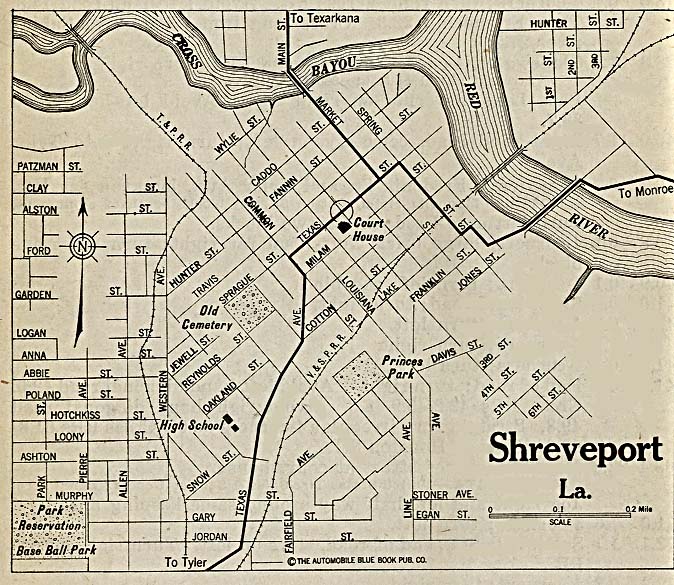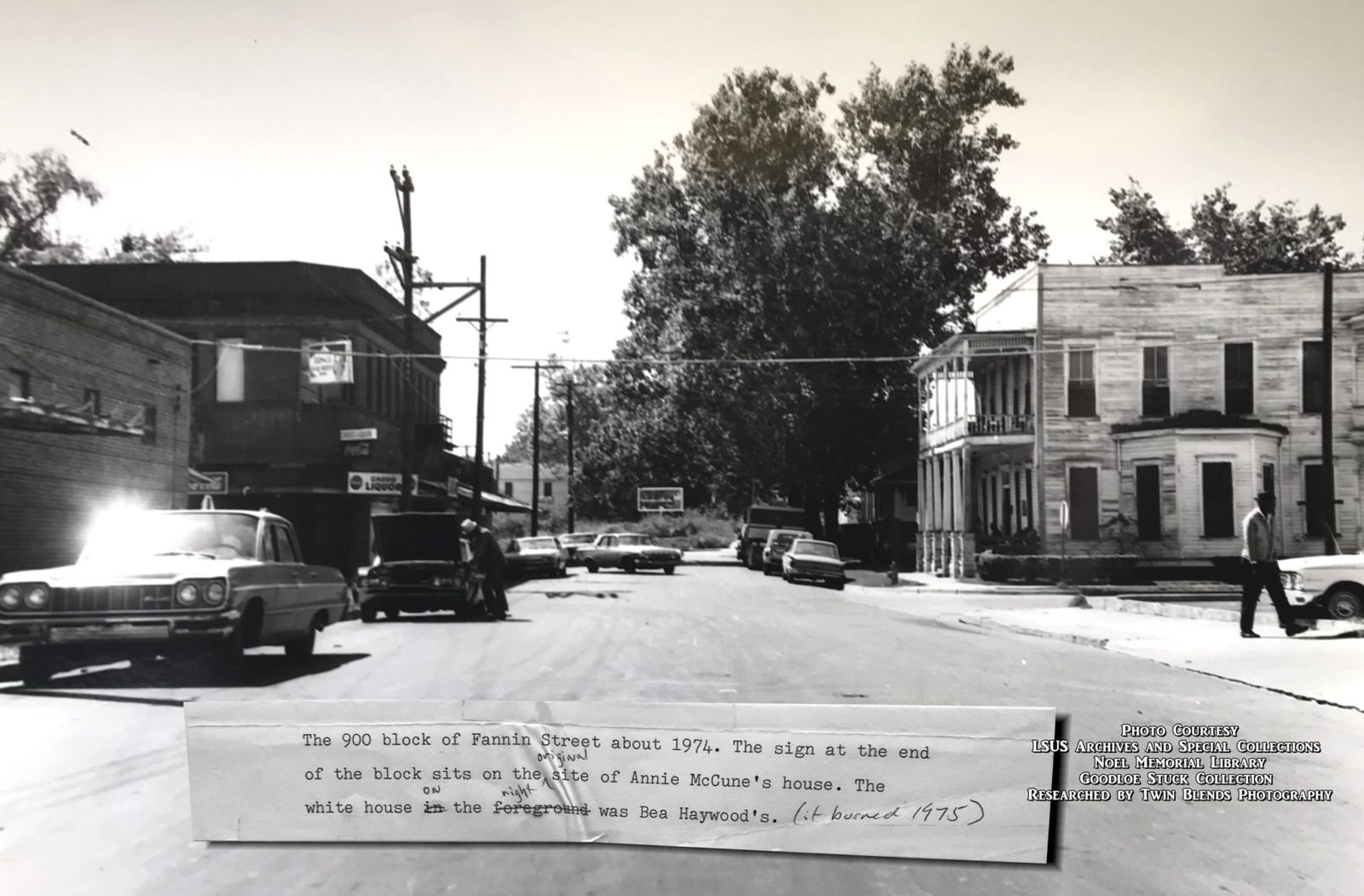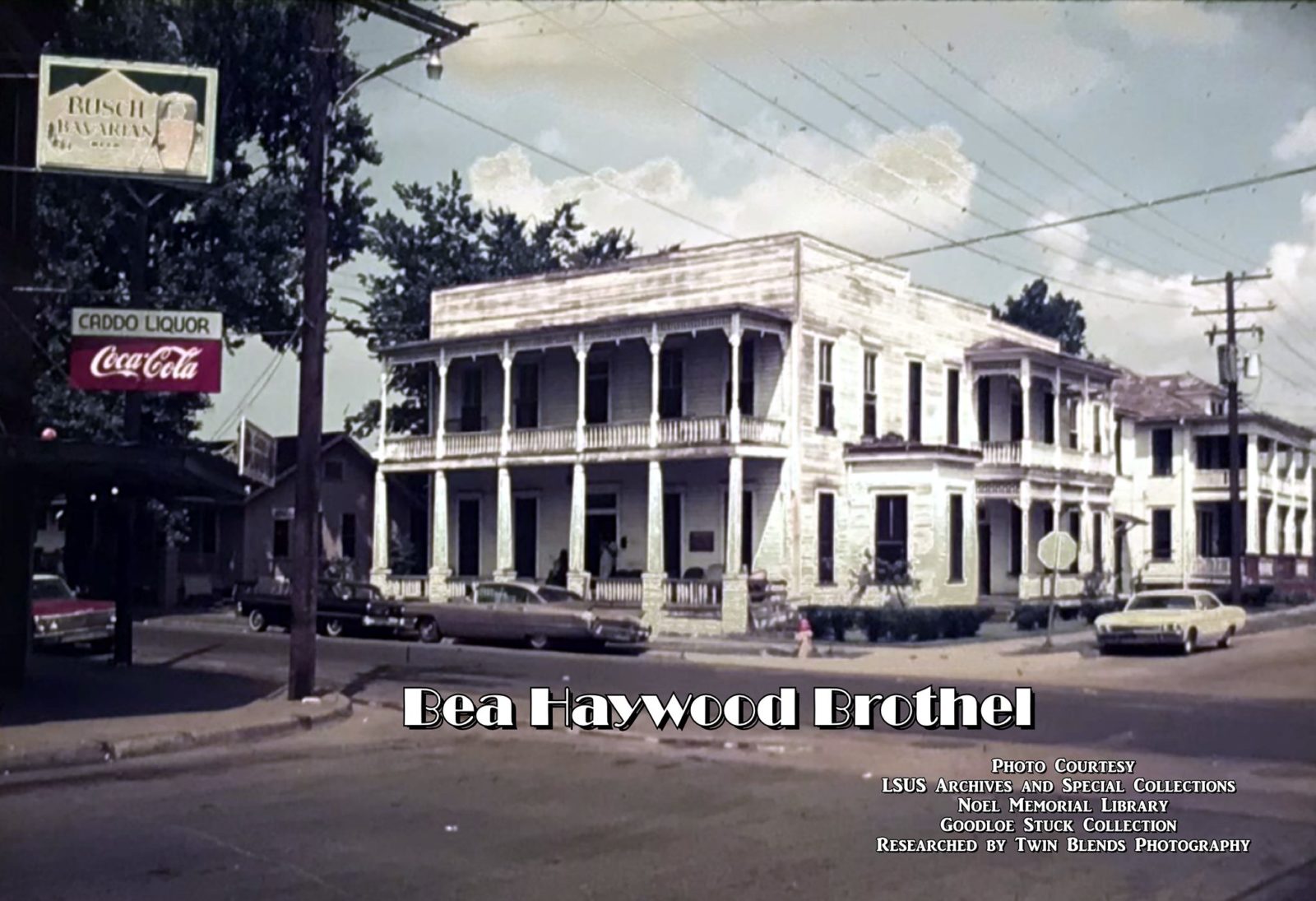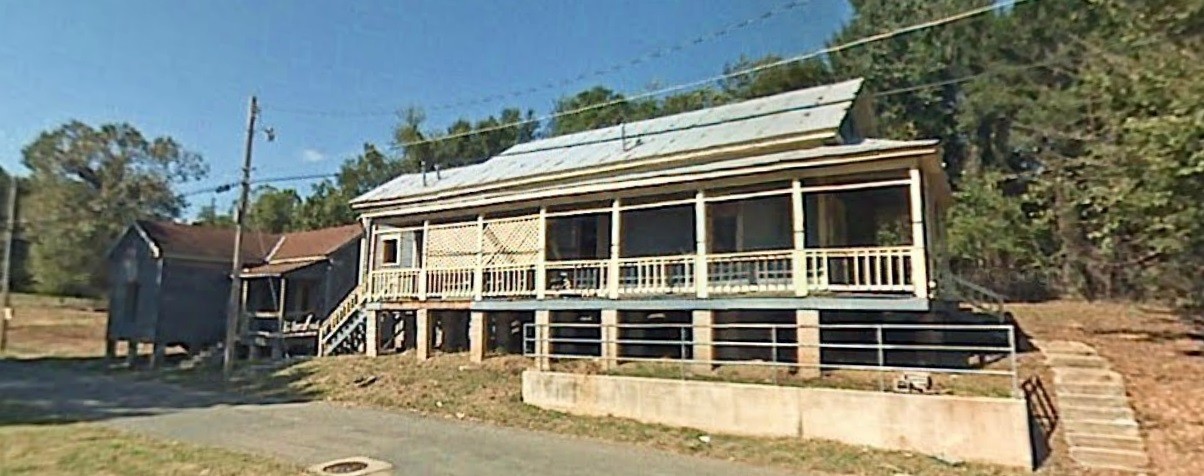
One of the most famous historical figures in Shreveport is a madam named Annie McCune, which in and of itself is a remarkable story. So, too, is that Shreveport was one of only two cities in the Louisiana that had a legal Red Light District in which the business of prostitution was purveyed. Shreveport’s Red Light District was just a stone’s throw from the Central Business District, in an area once known as St. Paul’s Bottoms (now Ledbetter Heights).

Local elected officials had tried for years to end the practice of prostitution. An ordinance passed in 1871 called “An Ordinance Relating to and to Regulate Lewd Women,” laid out where ‘lewd women’ could stand and walk, and ordered that “no woman or girl who is notoriously known to be a lewd person shall be found to be strolling in any street, sidewalk, market house or alley, or drinking in any coffey [sic] house or saloon after 8: 00 p.m. at night.” Not surprisingly, the ordinance did not end vice in the city, so the city did the next best thing- they tried to contain it within a geographical boundary.

Shreveport historian Eric Brock writes that Shreveport city fathers based the district’s laws on those of the Storyville Red Light District in New Orleans, which was established in 1897. One point to note is that the laws establishing the districts in Shreveport and New Orleans decriminalized prostitution, but did not make it legal, which prevented the courts from stepping in and shutting the districts down.

Huddie ‘Leadbelly’ Ledbetter
From 1903 until 1917, men went to Shreveport’s Red Light District for ‘dates’ and ‘discussions’, to gamble, drink at bars, dance at honky-tonks and music halls and linger at the city’s only opium den. On any given night, you might hear strains of Huddie ‘Leadbelly’ Ledbetter’s song ‘Fannin Street’ sung by the young man himself. In fact, he reportedly moved to the district at the age of 16 and lived there for at least two years before moving on. There was something for every taste and wallet in the district. Some of the brothels catered to upscale clients, some to middle class and some to whoever had $3 to spend.

Courtesy Twin Blends Photography LLC
Shreveport’s Red Light District was relatively compact and you can still drive or walk the streets that once ran through it. The current 800 and 900 blocks of Fannin and Travis were part of the district as were Douglas and Baker Streets. If you stand at the intersection of Common Street and Travis Street and look east toward the former Millennium Studio and the current construction project, you will be looking straight into the an area once teeming with people and businesses.

Courtesy Twin Blends Photography LLC
At the height of the District, there were over 100 registered brothels. Smaller homes housed independent businesswomen, and at least 40 larger buildings -including stately Victorian mansions and rooming-type structures- housed multiple young women and their madams. The district was full of characters who plied the trade; madams Nell Jester, Baby Jane, and Fannie Edwards, who reportedly made a small fortune in real estate; saloon keepers Caesar DuBose and George Neil and Ol’ Bob, who ran the opium den…but two of the best known are McCune and Bea Haywood. According to the book Wicked Shreveport and Goodloe Stuck’s Shreveport Madam, McCune was a woman of restraint and discretion and knew her business, politics and individual politicians well. Her girls were hygienic and schooled in etiquette, and all this combined to give her an air of legitimacy. She took her girls to performances at the Grand Opera House on Texas Street, but would not allow them to shop in the same clothing stores as the wives of her clients, to prevent embarrassment to the wives.

Courtesy Twin Blends Photography LLC
Haywood’s name is well known because her brothel was one of the last to remain standing. The old Victorian ‘palace’ on Fannin Street survived until destroyed by a fire in 1974. McCune’s large elegant home that had been newly constructed on Fannin Street when the district was set up, was lost years earlier. The very last of the Red Light District brothels, at View and Douglas Streets, was burned down in 2008 as part of an HBO movie.

Last remaining brothel, burned in 2008.
Luckily, there are photos that still exist of the area at the LSUS Archives and in private collections, because all of the Red Light District buildings, and most of the structures that made up St. Paul’s Bottoms, are now gone.
Want To Know More? (Of course you do!)
‘Like’ and follow the Twin Blends Photography LLC Facebook page. Brothers Mike and Mark Mangham are always looking for interesting and rarely-seen historical photos.
The Spring Street Museum at 525 Spring Street has a chair allegedly owned by Annie McCune. They also have a remarkable array of artifacts found in the former Red Light District, including an opium spoon. Curator Marty Loschen is a wealth of knowledge.
Read Shreveport Madam by Goodloe Stuck. It is not currently in print but copies are available at Shreve Memorial Library, and can be purchased online. There are generally several copies that turn up each year at the wonderful Centenary College Book Bazaar in September.
Wicked Shreveport by Bernadette Palumbo, Gary Joiner, Chris Hale and Cheryl White is available most everywhere; both online and at local bookstores. It is a good read.
Read the Huddie ‘Leadbelly’ Ledbetter Story in 64 Parishes.



